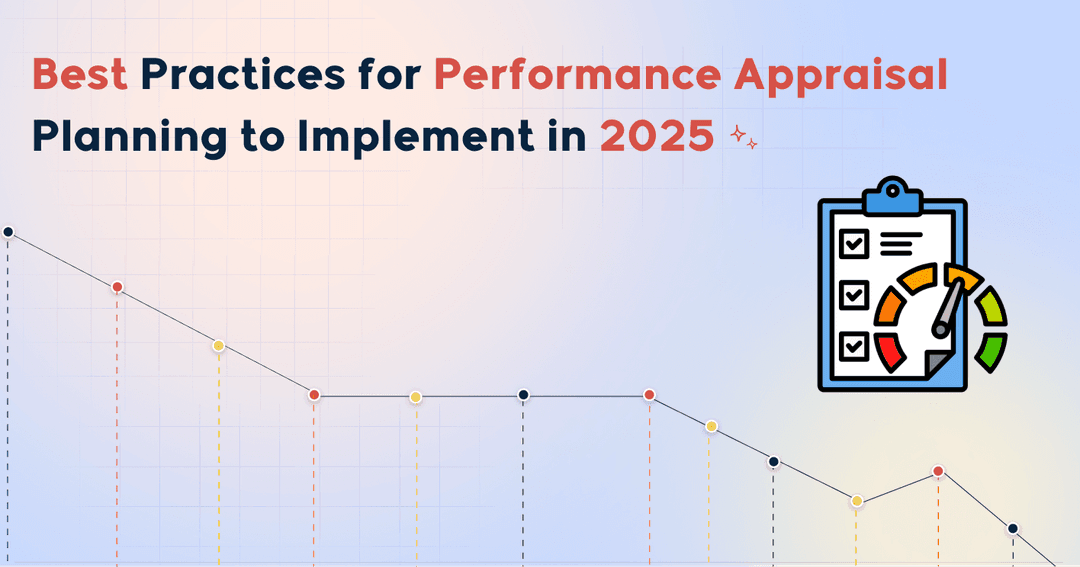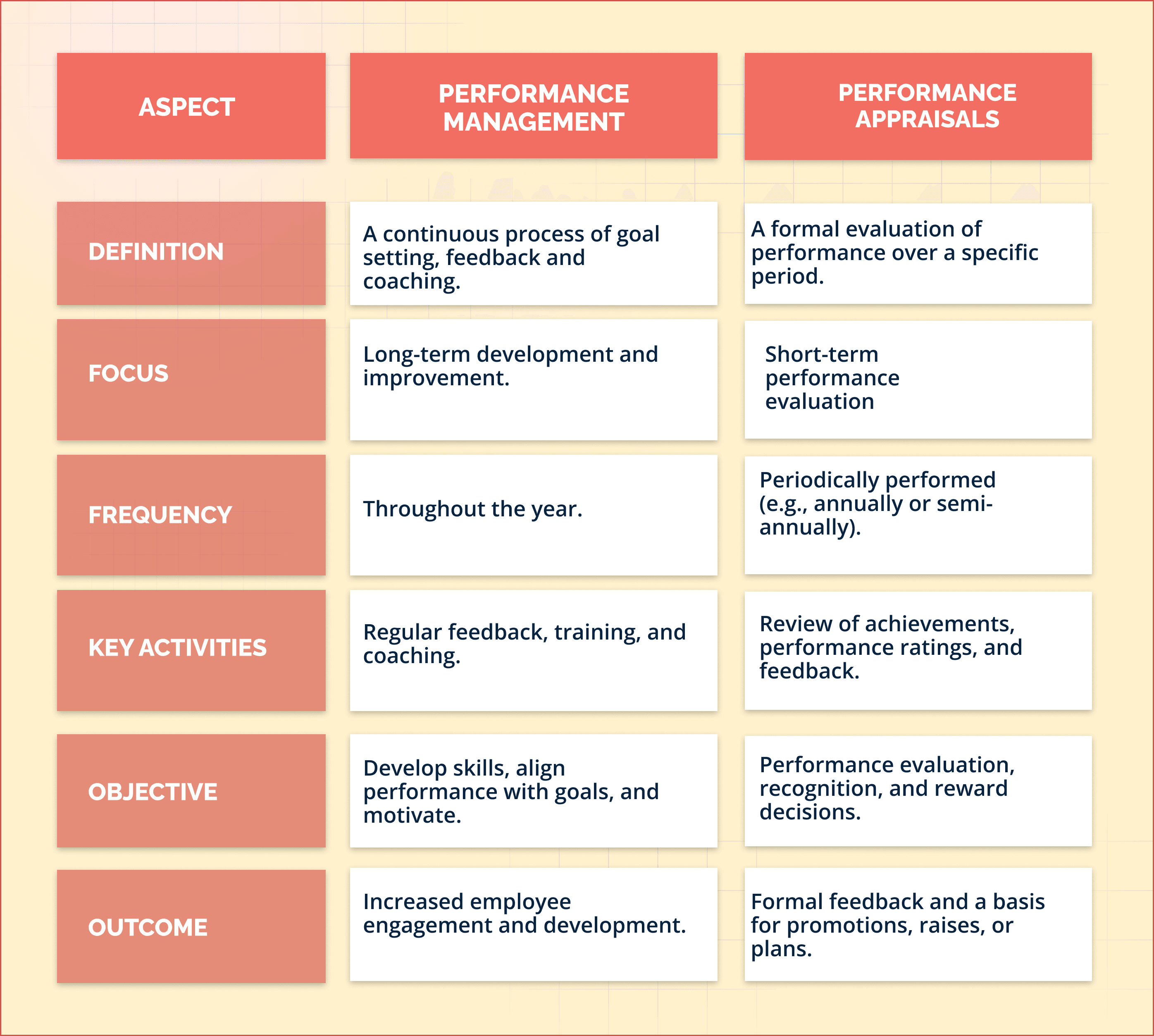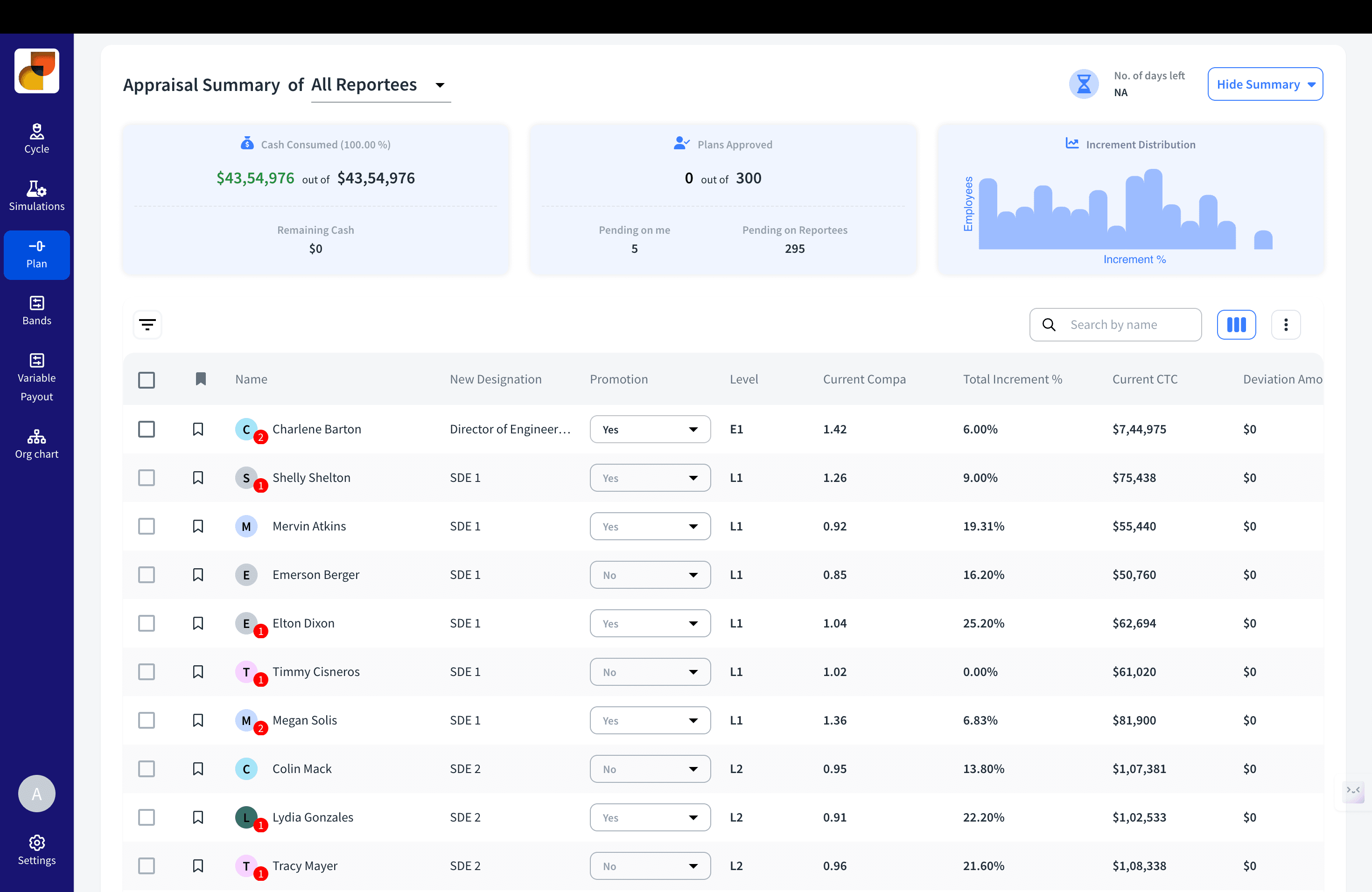
Performance appraisals continue to be a hub of human resources management in the modern business landscape where, above all else, employee engagement and performance determine the success of the organisation. But with current changes in the workplace and innovative trends, an HR professional needs to design appraisal processes aligned with organisational objectives and growing employee development.
Research has shown that those companies with well-developed performance management systems actually enjoy up to 14% better employee productivity (Gartner). The difference is not simply in terms of evaluation but establishing continuous development through feedback, recognition, and goal alignment.
Having said that, what would the scope for HR professionals to improve the appraisal process for 2024 be? Let's take a look.

A performance appraisal is a formal process where an employee's contributions, achievements, and overall job performance are judged against predetermined goals and standards. Managers can thereby give good feedback based on recognition, accomplishable performance targets toward further performance.
Now that we have understood what it is, let us discuss its purpose and importance.
The main purposes of performance appraisals include:
Performance appraisals are important for a number of reasons, including:
1. Reinforcing Employee Engagement:
Valued and motivated employees who receive constructive feedback contribute to higher engagement levels. Standardised reports repeatedly reflect that regular feedback increases engagement and motivation in the job by the employees. Gallup's State of the Global Workplace reported that workers who received consistent feedback were 4 times as likely to be engaged at work.
2. Focus on Training Requirements
Appraisals highlight skill gaps and allow organisations to implement targeted training programs at the right time. During the performance appraisals, it often reveals the skill gaps in employees, and therefore informs organisations about these research findings to design specific and targeted education and training programs to keep employees relevant and competent.
3. Career Development Outcomes
Employees understand their paths, which helps instil purpose and loyalty. Feedback appraisal clearly explains possible career paths for the employees, which provides a road map for growth, and thus clarifies the value being created within the organisation.
4. Better Performance
Clear communication between managers and employees about expectations and outcomes leads to better individual and team performance. A recent Gartner report showed that organisations using structured performance appraisal systems reported a 14% increase in productivity levels. This is directly because employees have clear expectations and align their efforts with organisational goals.
Performance management focuses on the present and the future. It charts the training and development programs according to feedback derived from employee performance. Whereas, performance appraisal focuses on the past by using historical data and ranking systems to assess employees' progress towards their objectives.
Let's see some in-depth differences-

Now that we are clear on the differences, let's explore the types of performance appraisal techniques next.
There are various performance appraisal techniques, each with its own pros and cons. Here are some common types:
1. Management by Objectives (MBO)
2. 360-degree Feedback
3. Peer Review
4. Behaviorally Anchored Rating Scale (BARS)
5. Graphic Rating Scale
Disadvantages: Without multiple detailed insights into the performance problems.
1. Collaborate on an Outline for the Performance Appraisals
Have an agenda that shall reflect on individual performance achievements, giving room for feedback, goal-setting, and an avenue for the employee to voice out concerns. This ensures that both the manager and the employee are focused and aligned in the conversation.
2. Engage Employees as Much as Possible
Encourage employees to conduct self-assessments. This motivates them toward ownership and gives them time to reflect on their own performance. When employees are involved in the process, the openness and transparency increase.
3. Train Managers to Adapt Their Communication Style
Employees do not all respond to feedback in the same way. Train managers to change their communication based on individual personalities to make performance feedback more impactful and effective.
4. Foster a Continuous Feedback Culture
The best performance appraisals are not one-time events. Ask managers to provide continuous feedback. This way, employees make real-time corrections and constantly improve.
5. Detailed Documentation of the Appraisal Process
Record key points such as agreed upon goals, positive feedback and negative feedback, and development plans that were discussed in the session. This keeps the process on paper, clear, transparent, and accountable during additional training accordingly.
A well-designed performance appraisal form is necessary to capture all the required data to make appraisals objective and comprehensive. Here is a broad breakdown:
Competencies for Key Jobs:
List the relevant competencies of the role. This may range from technical skills to leadership abilities or teamwork capabilities.
Scales of Job Performance & Job Behaviours:
Incorporate scales which will assess your job performance, say, on meeting deadlines and quality of work, and the job behaviours like teamwork, adaptability, etc.
Self-Assessment:
Allow employees to rate their performance as part of the process. It will provide you with an understanding of how they think of their experiences, good, and bad.
That way, they're helping companies boost organizational performance leading to overall organizational success.
To illustrate the performance appraisal process, let us look at a few examples with their criterias:
1. Software Developer
Critical Evaluation Criteria:
Team collaboration and problem solving skills.
2. Customer Service Representative
Critical Evaluation Criteria:
3. Marketing Manager
Critical Evaluation Criteria:
The science of performance appraisal is aimed at two basic purposes-to construct a tool that accurately measures the degree of job performance of an individual and to design an evaluation system that will help in promoting one or more business functions in an organization. To break it down-
1. Organisational Benefits
2. Benefits to the Employees
CompUp is an advanced performance management system that makes evaluations easier with actionable insights and promotes fairness in appraisals.

Key Features:
Take your appraisal process to the next level with CompUp by booking a demo and make sure 2024 becomes your most productive year yet.
Performance appraisal is fundamental for an organisation because it evaluates and develops employee performance. With the knowledge of various types of performance appraisals and best practice, organisations can develop a fair and effective appraisal procedure that benefits their employees and the organisations as well.
A strong performance appraisal system, with methods such as 360-degree performance appraisal, can lead to improved employee satisfaction, higher productivity, and absolute organisational success. Keeping the elements of clear objectives, regular feedback, and continuous development at the heart of the process, it can become the driving force of your company's human resources strategy. Implement employee monitoring software like CompUp into the workflow for seamless facilitation of performance improvement among the team and to ensure that everyone grows consistently in line with the organizational goals.
Community Manager (Marketing)
As a Community Manager, I’m passionate about fostering collaboration and knowledge sharing among professionals in compensation management and total rewards. I develop engaging content that simplifies complex topics, empowering others to excel and aim to drive collective growth through insight and connection.
Revolutionizing Pay Strategies: Don't Miss Our Latest Blogs on Compensation Benchmarking